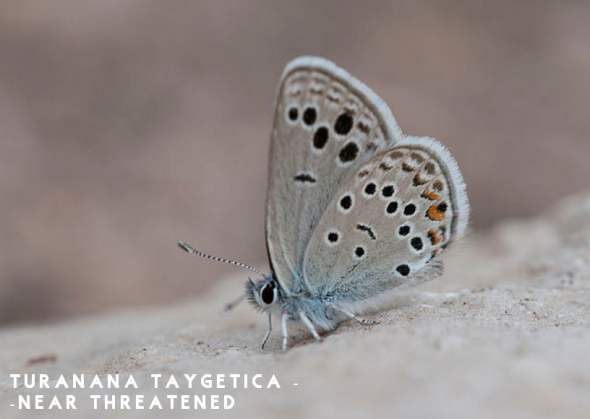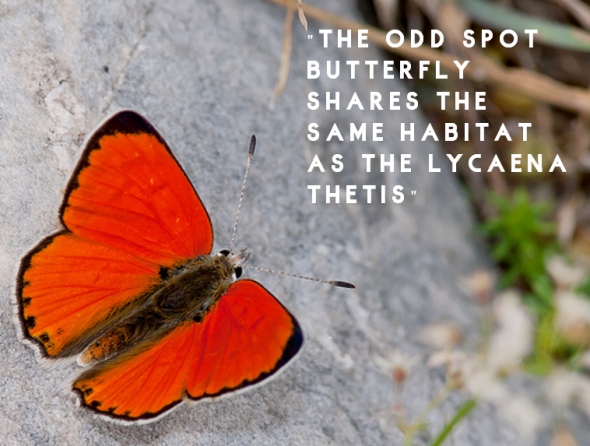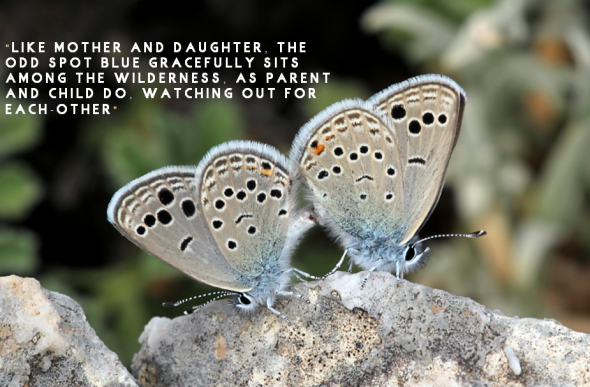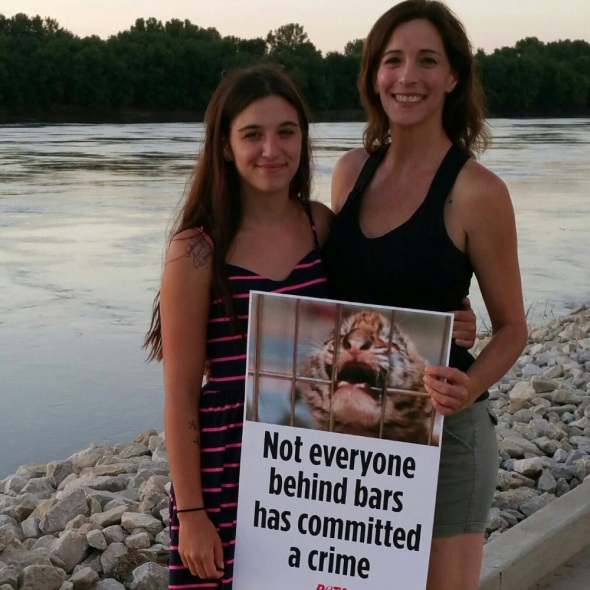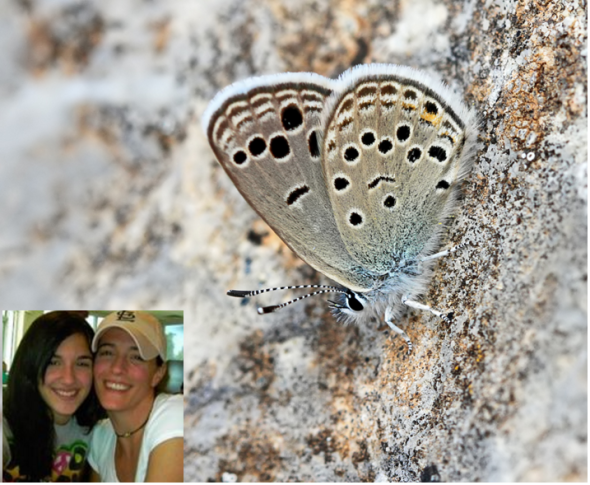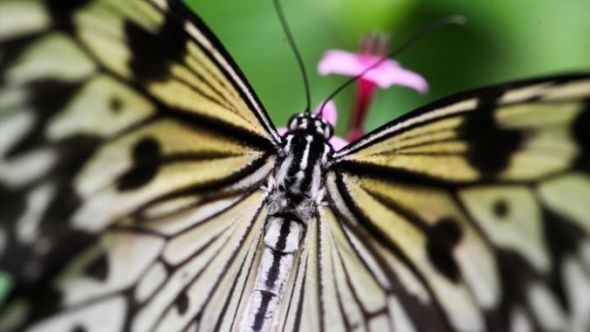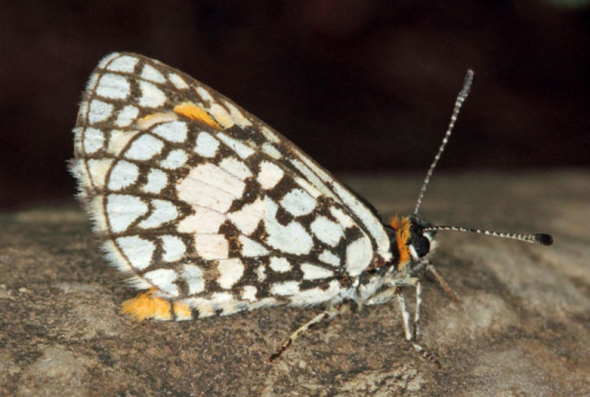Endangered Species Monday: Turanana taygetica | Dedicated to Mme Taylor Nicole.
Endangered Species Monday: Turanana taygetica
This Mondays (ESP) Endangered Species watch Post I touch up on the T. taygetica identified by Dr Rebel back in 1902. Image credited: Zeynel Cebeci I am also dedicating this article to the early Mme Taylor Nicole who sadly passed away last week to Mother Christina Ann. Mme Ann is an unselfish animal rights activist dedicating her time, love and care to African, American and international wildlife. Mme Ann regularly undertakes animal rights projects for the Start for Animals Project, Missouri, United States.
The ‘odd spot blue butterfly’ as the species is commonly known was primarily identified by Dr Hans Rebel whom was an Austrian entomologist who specialized in Lepidoptera. Rebel, who had an early interest in natural history and butterflies, first became a lawyer. He devoted his spare time to studying Lepidoptera and established the entomological section of the Botanical and Zoological Society of Vienna.
He succeeded Alois Friedrich Rogenhofer (1831–1897) as keeper of the Lepidoptera collection of the Naturhistorisches Museum in Vienna, a post he held from 1897 to 1932. Dr Rebel enriched the collections and as a grand voyageur, made many collecting trips in Austro-Hungary and five trips in the Balkans. He directed the Department of Zoology in 1923 and was the museum’s director general in 1925.
T. taygetica is listed as [near threatened], although new data from Cites has suggested that the species may soon be re-listed as [vulnerable]. To date there is very little knowledge known about this specific species of butterfly, and the split related species identified as T. endymion.
Endemic to Greece and Turkey (Europe), populations of this stunningly beautiful insect are known to be decreasing quite rapidly. The odd-spot blue butterfly occurs in dry, calcareous places covered with low-growing shrubs, and are commonly witnessed drinking the nectar from the herb plant identified as Thyme, scientifically known as Thymus vulgaris. Males are known to leave their normal habitat for more ‘damper patches of ground’, while females commonly lay their eggs within the species of flora identified as Acantholimon karamanicum.
Image: Odd spot blue Butterfly shares its habitat with the L. thetis.
The odd spot blue butterfly shares its habitat with this utterly stunning copper-tinged Lycaena thetis (pictured above), both of which contrast one-another beautifully. Both butterflies caterpillars also share the same species of food-plant which is quite a rare behavior within the world of butterflies.
The Turanana taygetica (scientific identification) is not known to be listed on anyone of the Cites Appendices either, despite the fact the species is near threatened/vulnerable, with populations declining quite rapidly within Greece and Turkey. Furthermore populations have plummeted to a staggering 30-50% over the past two decades. To date there is no-known true or mean population count. International Animal Rescue Foundation England are though looking into this, and hope to release a more accurate report addressed too the Convention on International Trade of Endangered Species wild flora and fauna (Cites).
Major Threats
This species has a restricted distribution. It is threatened by changes in the agricultural practices (mainly abandonment), quarrying and tourist activities. In Greece it is a popular butterfly for collectors. One population in Greece was recently destroyed by the building of a road. Regarding its limited distribution it might get threatened on the longer run by climate change. As the species is not treated in the Climatic Risk Atlas, there is no information on the possible change of the climate envelope.
Image: Odd spot blue butterflies watching each others backs
The length of the forewings is 10–12 mm. The ground colour of the upperside of the wings is blue with blackish marginal borders. The underside ground colour is whitish grey. Adult males are often found watering inside the forest zone and near the presumed host-plant.
This Mondays (ESP) Endangered Species Watch post is dedicated to the early Mme Taylor Nicole whom sadly passed away last week. Herein are a few links to share, tag, and to learn to cope with sudden bereavement within the family environment.
I myself never met Mme Nicole or her mother Christina, however have spoken to Christina occasionally in relation to the work that I have undertaken in the past regarding the pet meat trade. I believe I owe a little gratitude to such a wonderful person.
Image: Mme Christina Ann and Daughter Mme Taylor Nicole
Due to Mme Christina Ann’s daughter passing away suddenly, while Christina was on excursion on the continent of Africa, helping those within impoverished zones, and those with no voice, Mme Ann’s travel insurance would not cover the expenses of having to suddenly flying back home. Please be most kind to donate a small amount to help mother cover this charge by clicking the link hereto: https://www.gofundme.com/9nnawu5w
The link hereto https://www.compassionatefriends.org/Brochures/surviving_your_childs_suicide.aspx provides more details for parents on how to deal with sudden death. Compassionate Friends is a United States Not for Profit Organisation helping parents, relatives and friends dealing with the loss of a close loved one from suicide.
“The love between a mother and daughter is FOREVER”
Today’s Endangered Species Post (ESP) is dedicated to the Odd spot blue butterfly, Mother Christina Ann and Daughter Mme Taylor Nicole.
Thank you for reading.
Dr Jose Carlos Depre PhD. MEnvSc. BSc(Hons) Botany, PhD(NeuroSci) D.V.M.
Environmental, Botanical & Human Science
Chief Environmental Officer (CEO)
Endangered Species Monday: Alaena margaritacea
Endangered Species Monday: Alaena margaritacea
This Mondays (ESP) Endangered Species Watch Post we take a brief glance at South Africa’s most endangered species of butterfly. Generically identified as Alaena margaritacea the species was primarily located by Dr Harry Eltringham FRS (18 May 1873, South Shields - 26 November 1941, from Stroud) whom was an English histologist and entomologist who specialized in Lepidoptera. (Image: unknown photographer)
Dr Eltringham had been awarded a Master of Science (Cantab and Oxon) and a Doctor of Science (Oxon). He worked at the Hope Department of Entomology. He wrote Histological and Illustrative Methods for Entomologists OCLC 03655743, The Senses of Insects, London, Methuen (1933) and on Lepidoptera Nymphalidae: Subfamily Acraeinae. Lepidopterorum Catalogus 11:1-65 with Karl Jordan (1913) and On specific and mimetic relationships in the genus Heliconius.
Commonly known as the Wolkberg Zulu butterfly and identified back in 1929 the species stands within ‘threatened’ status of which has qualified for vulnerable listing. Endemic to a wee small town of South Africa the butterfly is from the family Lycaenidae which is the (second largest family of butterflies on the planet), hosting some 5,000 species and, constitutes 30% of the butterfly species on Planet Earth.
A. margaritacea is known to inhabit grassy slopes adjoining afromontane forest in the Haenertsburg area of the Limpopo Province near the Wolkberg. Populations trends are currently not known however we do know that flora alien (non-native botanical specimens) are placing the only two known colonies of Wolkberg Zulu butterflies within that area in [extreme danger], back in 2013-2014 a second colony was located to the joy of many.
To give you a clearer image of just how threatened the species is (any such habitat disturbance within their known range could see extinction occur within days rather than months or years).
However its not all doom and gloom yet. There is hope, even within a country that’s habitat is slowly being destroyed by agriculture, aquaculture and urbanization. Three years ago the species was believed to have gone extinct. However an intensive search was mounted by members of the Lepidopterists’ Society of Africa.
Despite being identified back in 1929 the species has only ever been known to occur in one single location: a small town in northern South Africa in Polokwane within the town of Haenertsberg. The wingspan is 24–27 mm for males and 28–30 mm for females. Adults are on wing from late December to early January. There is one generation per year. Lepidopterists’ Society of Africa spokesperson Naturalist Andre Coetzer stated that as yet none has been able to locate a third colony (2014).
The species has a habit of settling very frequently and for very long periods … which makes searching for the butterfly a tedious, challenging task involving long treks over rocky terrain while combing and scrutinizing the grass and undergrowth. And there’s another problem: the Wolkberg Zulu has an extremely short flight period (the ‘winged’ adult part of its life cycle) – just three weeks in December and early January that also happens to fall right in the middle of the rainy season. All of this easily explains why no one has found another colony of this elusive and endangered butterfly in the last 80 years. Until now… Please read more here to learn more on the butterfly. For fuether information please contact the organisation directly - click here
A typical liquid diet consists of nectar from flowers but also eat tree sap, dung, pollen, or rotting fruit. They are attracted to sodium found in salt and sweat too.
The word Lepidoptera is derived from the Latin words “lepido” meaning scale, and “ptera” meaning wings. Lepidoptera literally means scale wings, referring to the minute scale-like structures on the wings of both butterflies and moths. We are unsure as to how many Wolkberg Zulu Butterflies actually live within the two colonies, there could be anything from 100-200 (random guess). Which is why we please ask all our readers to make a donation to the Lepidopterists Society of Africa to secure more projects.
Image: Wolkberg Zulu butterfly
For now we remain skeptical and whether there will be more colonies located. We are praying for more colonies to be located. The Department of Environmental Affairs must do more to protect their lands from invasive botanical species to ensure future survival of all flora and fauna. Not forgetting establishing a funding program, protected and manned area to secure their South Africa’s critically endangered butterfly. Failing this we’ll lose South Africa’s most rarest butterfly known to humankind.
Threats
The only known threat to be placing the species in direct danger are that of alien botanical species. Habitat destruction is not known to be problematic within the region although agriculture and human disturbance could very well become a problem. For more information on alien invasive species please see click here for further information.
Unfortunately folks we do not have a video to show of this amazing video but hope one is made available soon. Video footage of this amazing yet so very rare butterfly would be wonderful to view. Please don’t forget to check out the links above and, donate if you can to the group Lepidopterists’ Society of Africa.
Thank you for reading.
Dr Jose C. Depre.
Chief Environmental and Botanical Scientist.

